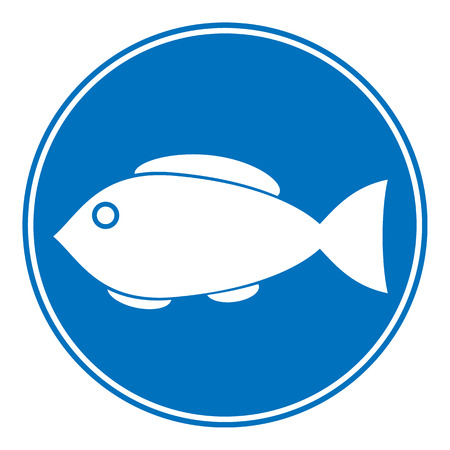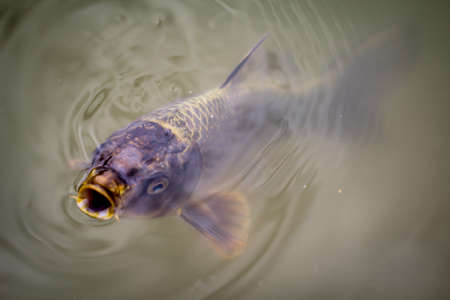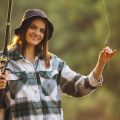Understanding Trout Species and Their Ecosystems
Trout are more than just a favorite catch for anglers—theyre a vital part of Americas freshwater ecosystems. Understanding the different types of native trout, their roles in the environment, and why its important to protect their habitats is the first step toward ethical trout fishing.
Native Trout Species in the U.S.
The United States is home to several native trout species, each adapted to specific regions and conditions. Heres a quick look at some of the most well-known native trout:
| Trout Species | Native Range | Key Habitat Features |
|---|---|---|
| Brook Trout | Northeastern U.S., Appalachian Mountains, Great Lakes | Cold, clean, well-oxygenated streams with forest cover |
| Cutthroat Trout | Western U.S., Rocky Mountains, Pacific Northwest | Mountain streams and rivers with gravel bottoms |
| Gila Trout | Southwestern U.S., Arizona & New Mexico | Small, spring-fed mountain streams with limited disturbance |
| Lahontan Cutthroat Trout | Great Basin region (Nevada, California) | Lakes and rivers with alkaline water and varied temperatures |
| Apache Trout | White Mountains of Arizona | Clear, cool mountain streams above 5,900 feet elevation |
The Role of Trout in Freshwater Ecosystems
Trout play an important role in maintaining a healthy ecosystem. They help control insect populations by feeding on aquatic bugs like mayflies and caddisflies. In turn, they serve as food for larger predators such as birds, bears, and other fish. Because they are sensitive to pollution and temperature changes, healthy trout populations often indicate a clean and balanced water system.
Biodiversity Matters
A diverse population of native trout helps support overall biodiversity. Each species is uniquely adapted to its environment, and when one population declines or disappears due to habitat destruction or overfishing, it can throw the whole ecosystem off balance.
The Importance of Preserving Natural Habitats
The biggest threats to native trout are habitat loss, pollution, invasive species, and climate change. Protecting their natural environments ensures future generations can continue to enjoy trout fishing while maintaining ecological integrity. Efforts like restoring stream banks, planting riparian vegetation, and reducing runoff from agriculture all make a difference.
Sustainable Fishing Starts With Knowledge
If youre serious about ethical trout fishing, learning about the fish you’re targeting—and the waters they live in—is essential. By understanding where they thrive and what they need to survive, anglers can take steps to minimize harm during catch-and-release practices. And that’s what responsible fishing is all about.
2. The Importance of Ethical Angling
When it comes to trout fishing, especially in areas where native species are present, practicing ethical angling is more than just a good habit—its essential. Ethical fishing helps ensure that wild trout populations remain healthy for future generations and keeps our favorite fishing spots open to the public.
Why Ethics Matter in Trout Fishing
Native trout species like brook, cutthroat, and golden trout are sensitive to environmental changes and fishing pressure. By following responsible fishing practices, we can help reduce stress on these fish and avoid damaging fragile ecosystems. Ethical angling isn’t about limiting fun—it’s about protecting what we love for the long haul.
Key Principles of Responsible Fishing
Here are some core values every angler should follow when fishing for trout, especially in catch-and-release situations:
| Principle | What It Means |
|---|---|
| Handle Fish Gently | Wet your hands before touching the fish to protect its slime coat and avoid using dry towels or gloves. |
| Use Barbless Hooks | Easier hook removal minimizes injury and gets the fish back in the water faster. |
| Limit Air Exposure | Try to keep the fish out of water for no more than 10 seconds at a time. |
| Fish During Cooler Hours | Trout are more stressed in warm water; early morning or late evening is best during summer months. |
| Follow Local Regulations | Check state rules for gear restrictions, seasonal closures, and special management areas. |
Sustaining Public Access Through Responsibility
Poor angling behavior can lead to damaged habitats and upset landowners, which sometimes results in restricted access to prime fishing waters. When anglers show respect—for the fish, for the land, and for each other—it helps maintain open access and good relationships with local communities and wildlife agencies.
The Bigger Picture
Ethical angling connects us with nature while making sure native trout continue to thrive. It also sets a strong example for new anglers who are just learning the ropes. By doing things the right way, we help create a culture of care around our rivers, lakes, and streams.
Remember:
Every cast is a chance to make a difference. Fish smart. Fish fair. And always fish with the future in mind.

3. Proper Catch and Release Techniques
Practicing proper catch and release is key to protecting native trout species and ensuring future generations can enjoy the sport. Using the right gear, handling fish with care, and releasing them quickly can significantly reduce stress and injury to the fish. Heres how you can do it the right way, following American conservation standards.
Choose the Right Gear
Your equipment makes a big difference in how safely you can catch and release trout. Use barbless hooks whenever possible—theyre easier to remove and cause less damage. Lightweight rods and appropriate line strength also help reduce fight time, which lowers stress on the fish.
| Gear | Recommended Type | Why It Matters |
|---|---|---|
| Hooks | Barbless or circle hooks | Easier to remove, less injury |
| Nets | Rubber or knotless mesh nets | Minimizes scale and slime damage |
| Rod & Line | Match rod strength to target species | Shortens fight time, reduces exhaustion |
Handle with Care
Once youve hooked a trout, your handling technique is crucial. Wet your hands before touching the fish to avoid removing its protective slime coating. Avoid squeezing or holding the fish by the gills—support it gently under the belly and tail.
Quick Handling Tips:
- Keep the fish in water as much as possible.
- If lifting for a photo, do it quickly—10 seconds or less.
- Avoid letting the fish flop around on dry surfaces.
Release Promptly and Safely
The final step is releasing the trout quickly and correctly. Hold the fish facing upstream in calm water until it swims away on its own. If it seems sluggish, gently move it back and forth to help water flow over its gills.
Best Practices Summary:
- Use barbless hooks and rubber nets.
- Minimize air exposure—ideally under 10 seconds.
- Handle with wet hands; never squeeze or drop.
- Revive the fish before release if needed.
Treat every trout like its a rare native—because in some rivers, it might be. Following these simple steps helps preserve local ecosystems and keeps our waters full of healthy fish for years to come.
4. Gear Selection and Preparation
Choosing the right gear is a big part of practicing ethical trout fishing, especially when your goal is to protect native species through catch and release. The equipment you use directly affects the health and survival of the fish after its released. Heres how to make smart, conservation-minded choices before you hit the water.
Barbless Hooks: A Simple Switch That Makes a Big Difference
Barbless hooks are one of the easiest ways to reduce harm to fish. They make it easier to release trout quickly and with minimal handling, which helps lower stress and injury. You can buy barbless hooks or simply pinch down the barb on regular hooks with pliers. Either way, youll be helping more fish survive after release.
Why Barbless Hooks Matter
| Feature | Benefit for Fish |
|---|---|
| Easier Removal | Reduces time out of water and chance of injury |
| No Tearing | Minimizes mouth damage during hook removal |
| Simpler Handling | Lowers stress by allowing faster release |
Use a Rubber Landing Net
Nets made with rubber or rubber-coated mesh are much gentler on fish than traditional nylon nets. They help protect the slime coating that keeps fish healthy, and they reduce fin damage. Look for nets labeled “fish-friendly” or “catch-and-release approved.” A good net also allows you to keep the trout in the water while unhooking it, which is key to reducing stress.
Selecting Line and Rods for Ethical Angling
Your rod and line setup should match the size of trout you expect to catch. Using too light a line can lead to longer fights, which increases exhaustion and reduces a fish’s chances of surviving release. Choose gear that allows you to land fish efficiently without overplaying them.
Recommended Gear Setup by Trout Size
| Trout Size | Rod Weight | Main Line Strength |
|---|---|---|
| Small (under 12″) | 2-4 wt fly rod / Ultralight spinning rod | 2–6 lb test line |
| Medium (12–18″) | 4-6 wt fly rod / Light spinning rod | 6–10 lb test line |
| Large (18″+) | 6-8 wt fly rod / Medium spinning rod | 10–15 lb test line |
Tackle Organization Tips for Ethical Fishing
- Keeps tools handy: Use a vest or pack with organized compartments for easy access to forceps, extra leaders, and barbless flies.
- Packs hemostats or pliers: These help remove hooks quickly and safely.
- Carries a small thermometer: Avoid fishing when water temps are too high (usually above 68°F), as it stresses trout more.
A little prep goes a long way toward protecting native trout populations. With thoughtful gear selection and setup, youre not only improving your own experience but also doing your part for conservation-minded angling.
5. Regional Regulations and Community Involvement
Understanding the rules and becoming part of your local angling community is a big part of responsible trout fishing. Different states across the U.S. have their own specific regulations when it comes to trout fishing—especially when it involves native species. Knowing these rules helps protect fish populations and ensures that catch and release practices actually work.
Know Your States Trout Fishing Rules
Each state sets its own guidelines for trout seasons, size limits, bait types, and protected areas. Following these not only keeps you legal but also helps conserve native trout species like brook trout in the East or cutthroat trout in the West. Here’s a quick look at how regulations can vary:
| State | Trout Species Protected | Common Regulations |
|---|---|---|
| Montana | Westslope Cutthroat Trout | Barbless hooks required, catch and release in certain zones |
| Pennsylvania | Brook Trout (native) | No live bait in wild trout streams, strict size and creel limits |
| California | Lahontan Cutthroat Trout | Certain waters closed during spawning season, artificial lures only |
You can find up-to-date info on your state’s Department of Fish and Wildlife website or by visiting local tackle shops.
The Power of Local Conservation Efforts
If you’re serious about helping native trout thrive, consider getting involved with conservation groups. Many organizations hold stream cleanups, habitat restoration events, and educational workshops. These efforts often directly benefit local fish populations and improve water quality.
Examples of Community Projects:
- Trout Unlimited Chapters: Volunteer for habitat restoration or youth education programs.
- Stream Monitoring Programs: Help collect data on water temperature, clarity, and insect life—all important for healthy trout ecosystems.
- Catch & Release Clinics: Teach new anglers the right way to handle fish to reduce stress and injury.
The Role of Angler Communities
Your fellow anglers are an invaluable resource. Joining a local fishing club or online forum connects you with people who know your area’s waters well. They can share tips on ethical fishing techniques, seasonal patterns, and even where sensitive habitats are located so you can avoid disturbing them.
The more involved you are, the more likely you’ll be to stay informed about changes in regulations or new conservation initiatives that impact native trout in your region. It’s all about protecting what we love—for this generation and the next.

